Ford’s board of directors could vote next week on the widely rumored acquisition of Detroit’s long-abandoned Michigan Central Station, according to the great-grandson of the automaker’s founder Henry Ford.
If completed, the purchase would revitalize what has, for decades, served as a symbol of the Motor City’s long slide into urban decay. It would also serve as an anchor for what, according to some sources, could soon become a major campus for Ford’s mobility services efforts.
The carmaker’s board “has been briefed” on the negotiations for the Michigan Central Station, and the possibility of a “big redevelopment” effort in Detroit’s southwest corner, according to board member Edsel Ford II, son of former Chairman Henry Ford II. “It doesn’t need a vote, but it requires a buy-in,” according to Edsel Ford, who spoke to reporters during a ceremony in downtown Detroit on Monday.
The world’s tallest train depot when it opened in 1914, the Michigan Central Station served over 200 trains a day at its peak in the 1940s, but as the automobile took root, rail travel declined and even Amtrak abandoned the station in 1986.
A series of renovation plans have failed to come to fruition and vandals largely destroyed the once-elegant facility’s grand lobby and façade over the years. Current owner Manuel “Matty” Moroun, has been repeatedly faulted for failing to maintain the building, though he recently replaced the station’s windows and fixed some of its elevators, at an estimated cost of $8 million. But it has been unclear whether the billionaire investor was hoping to eventually rebuild the station on his own or just make it more appealing to a buyer.
(Ford beats Wall St. forecast with strong Q1 earnings. Click Here for more.)
Word of Ford’s interest began leaking out last month, with William Clay Ford Jr., Edsel’s cousin and fellow board member, as well as Ford Executive Chairman, spearheading the effort.
“Bill’s excited about it, and I’m excited about it,” said Ford, noting that a move to acquire the depot would be part of a broader, “big redevelopment” centered around Detroit’s Corktown neighborhood, though Local business publication Crain’s Detroit quoted Ford as cautioning “nothing” has been “officially announced,” with the deal yet to be completed.
Ford has already made a move into what is the oldest neighborhood in Detroit. Last December it formally acquired a building known locally as “The Factory,” where it will headquarter its electric drive and autonomous vehicle programs. At a dedication program, both Bill Ford and the automaker’s CEO Jim Hackett told TheDetroitBureau.com that they were looking for opportunities to expand the company’s presence in Detroit, with an emphasis on the Corktown neighborhood.
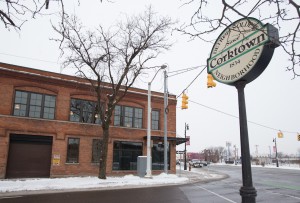
Ford is moving its autonomous vehicle and EV business and strategy teams to "The Factory" in Detroit's Historic Corktown neighborhood.
(What’s going on at “The Factory”? Click Here for more on Ford’s new project.)
Long blighted, Corktown has become one of the main centers of Detroit’s rapid urban revival, properties increasingly in price rapidly as Millennials, Gen-Xers and even Baby Boomers have moved back in – many looking for inner-core housing near the expanding jobs base downtown.
But Corktown could start providing its own jobs base, according to a Crain’s report which indicated Ford may be looking at as many as 50 different buildings and vacant parcels of land that could be used to create a campus covering 21 acres and providing more than 1.1 million square feet of interior space.
“We are excited about our return to Detroit this year with our electric vehicle and autonomous vehicle teams relocating to the Factory in Corktown,” Dawn Booker, a spokeswoman for Ford Land Development Corp., the real estate arm for Ford Motor Co., said in a statement.
But she cautioned that, “While we anticipate our presence over time will grow as our AV/EV teams move downtown, we have nothing further to announce at this time.”
Company founder Henry Ford lived in the Motor City for a number of years, incorporating his third car company – and the first to succeed – along the Detroit River. He operated his first factory in the city, as well, but eventually returned to the then rural suburb of Dearborn where he grew up on a farm.
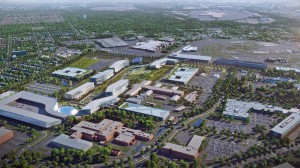
The Corktown project raises questions about Ford's commitment to a $1 bil makeover of its current administrative and technical Operations in Dearborn.
The founder’s grandson Henry Ford II launched a brief return to Detroit, helping fund the massive Renaissance Center complex near where the automaker was founded. But the automaker subsequently relocated its employees back to Dearborn and the “RenCen” was later sold to arch-rival General Motors which now uses the center as its own headquarters.
CEO Hackett’s predecessor Mark Fields had remained committed to Dearborn, two years ago announcing a $1 billion effort to completely restructure and rebuild the sprawling Ford administrative and technical offices there.
Now, the possibility of creating a new complex barely a mile from downtown Detroit is raising serious concerns about the Dearborn project.
Following the top-level management shake-up last spring that saw Hackett replace Fields, the new CEO launched a 100-day effort to review all of Ford’s major programs. He has since announced a number of significant moves, just the month revealing that the manufacturer will abandon all but one of its current U.S. passenger car models, the Mustang, in a switch to more profitable crossover and conventional truck products.
According to Crain’s, Hackett has also questioned the Dearborn campus makeover – likely with the buy-in of Chairman Bill Ford. The publication quotes sources saying Oslo-based Snohetta Architects and Detroit-based Gensler led a study of the $1 billion effort, though it is unclear what the results were.
Moving out of Dearborn seems highly unlikely, according to TheDetroitBureau’s own sources. But some key operations could move into the Motor City, especially those linked to new mobility services, including ride-sharing and connected car technologies, as well as the electric drive and autonomous vehicle programs that will be based at The Factory expected to soon house over 200 Ford employees.
(For more on Ford’s possible plans for the Michigan Central Station, Click Here.)

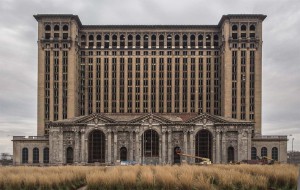
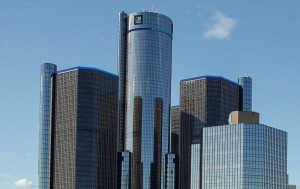
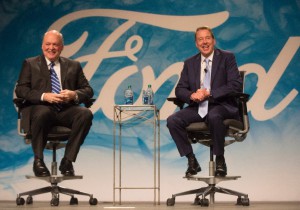
They may need to keep the sedans rolling to help fund this, unless they get some form of tax credits, which the city can’t afford.